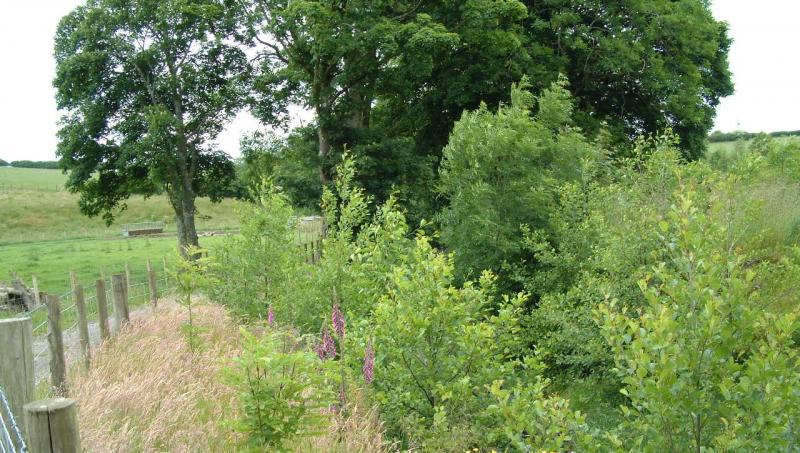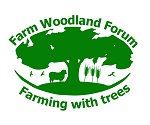Hedges are a traditional sight in the landscape of the UK and Ireland, having developed over millennia as a means of keeping livestock within parcels of land. For this purpose they have to be maintained by pruning to ensure they are dense enough to prevent animals from passing through them, and this density makes them a good shelter from the wind. They are a valuable resource for birds and other wild animals as a source of food, shelter and nest sites.
The shelter afforded by hedgerows is copied by strategic planting of trees as windbreaks. This can range from the traditional planting of trees round isolated farmsteads, offering protection from cold northerly winds, to planting rows of trees to provide shelter around fruit orchards, or banks of trees to provide winter shelter for livestock. Planting rows of trees round intensive livestock facilities can help filter out ammonia emissions from the air.
Trees can be planted along river banks to improve riparian habitats, to stabilise river banks and to help hold back floodwaters.
When farmers in the Pontbren Group in upland mid-Wales planted shelter belts to improve the welfare of overwintering sheep (see picture above), it was found that the presence of growing trees near water courses slowed the movement of water from extreme rainfall events into the streams, therefore slowing the movement of the water down the catchment and lowering the risk of flooding in the lowlands. Additional information on the Pontbren project can be found in the Woodland Trust report (https:///www.woodlandtrust.org.uk/publications/2013/02/pontbren-project-sustainab...). Trees have been deliberately planted on farmland in the 'Slow the Flow' project at Pickering, North Yorkshire, to slow the rise of floodwaters (https://www.forestresearch.gov.uk/research/slowing-the-flow-at-pickering/). Similarly, at a larger scale in the Aire valley trees are being planted on farmland as part of the Leeds Flood Alleviation Scheme, part of a wider natural flood management scheme (https://leedscitycouncilfloodresilience.commonplace.is/en-GB/proposals/l...).

